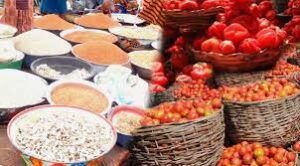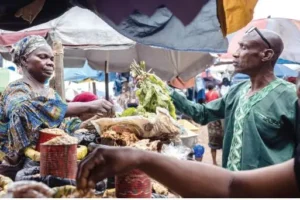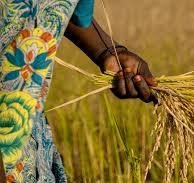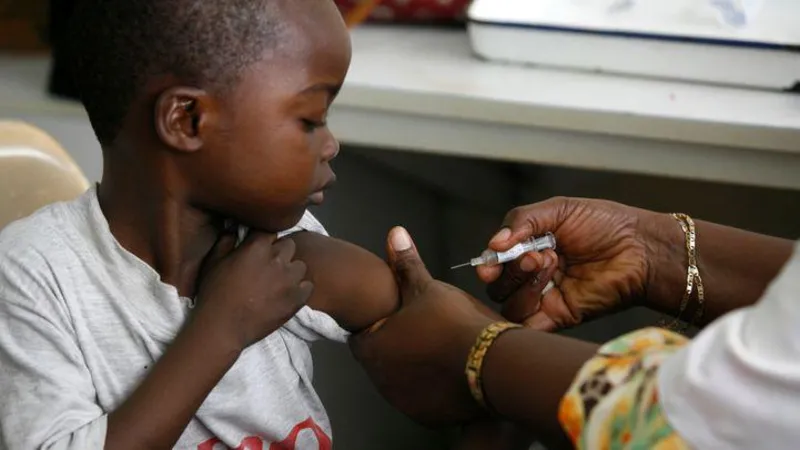A looming food and security crisis is unfolding in northern Nigeria, where unpredictable rainfall patterns and escalating insecurity are severely disrupting agricultural production and threatening the livelihoods of millions.
This is not simply a seasonal setback, for it represents a complex and deepening emergency with far-reaching consequences for the region’s role as Nigeria’s breadbasket. In this special report, Hussaini Kafi examines how these interconnected challenges are affecting farming communities in Kano and neighbouring states, and what this means for national food security.
Dangerous Environmental Crisis

In a region once celebrated for its lush green fields, fertile plains, and bustling open-air markets overflowing with fresh produce, an unrelenting environmental crisis is tightening its grip on northern Nigeria. The changes have been slow, almost invisible at first, but now they are impossible to ignore. Erratic skies, dwindling rainfall, and mounting insecurity are converging into a perfect storm, threatening not just the current harvest but the very foundation of livelihoods, and, by extension, the health and survival of millions.
Rising Food Prices Waiting
Through on-the-ground reporting and personal accounts, Africa Health Report Correspondent traces the unfolding impact of this slow-moving disaster. From seasoned farmers in Kano’s rural heartlands to traders in neighbouring states, the story is one of shrinking options, rising prices, and a creeping fear of hunger that no longer lurks quietly on the horizon—it has begun knocking insistently at the door, demanding attention.



NiMet Forecasts
The skies over Kano have stayed stubbornly clear this year, with the Nigerian Meteorological Agency (NiMet) estimating rainfall deficits of up to 25% below the seasonal average. For farmers and herders in Nigeria’s most populous northern state, these figures are not abstract—they mean parched farmlands, withering stalks, and dwindling hopes for a good harvest. The scarcity of rainfall, already stretching into critical planting months, is deepening fears of hunger, job losses, and rising insecurity across the region. For rural families that depend almost entirely on farming for food and income, every cloudless day is a reminder of how fragile their survival has become.
Same Scenario
Neighbouring states, including Jigawa, Bauchi, Zamfara, and Kebbi, are experiencing a similar fate. Farmers there report that rains have become erratic, falling in short, unpredictable bursts or failing altogether for weeks. In a region that produces a substantial share of Nigeria’s food, the consequences are likely to ripple far beyond state borders, affecting urban markets hundreds of kilometres away. Traders in major cities like Lagos, Port Harcourt, and Onitsha are already bracing for shortages and price spikes.
Farmers’ Voices
“Our crops are dying before they even take root. We can’t predict the rain anymore,” said Khalil Usman, a farmer from Kureke in Kumbotso LGA. Khalil’s voice carried the weariness of a man who has seen too many planting seasons end in disappointment. For him, the rains once followed a rhythm his father taught him, one that guided planting and harvesting like clockwork. Now, he says with quiet frustration, “The sky no longer keeps its promises.”

In Takai and Durbunde — the headquarters of Takai LGA — other farmers echo his fears. One elderly farmer in Durbunde, standing in a field where millet should have been sprouting, shook his head slowly. “We depend on the rain. Without it, there’s nothing,” he said, his feet sinking slightly into the cracked soil as he surveyed what should have been his livelihood.
Region at the Mercy of the Weather
Nigeria currently lacks the technological capacity to influence rainfall, unlike countries such as the UAE or the United States, which can attempt cloud seeding to stimulate precipitation. Here, the weather plays its own unpredictable game. Rainfall across the north has become increasingly erratic, with extended dry spells now punctuated by sudden, destructive downpours that wash away fragile seedlings before they have the chance to mature. NiMet’s data confirms that rainfall is up to a quarter below normal in several states this year, putting enormous strain on both rain-fed and irrigated agriculture.
Breadbasket under Threat
Often dubbed Nigeria’s breadbasket, the northern belt—including Kano—supplies staples such as maize, rice, sorghum, and tomatoes to major cities in the south. But this year’s harvest projections are grim. The Kano River Project, one of West Africa’s largest irrigation schemes, has been hampered by low water levels, silting, and years of inadequate maintenance. This has limited its capacity to offset the effects of drought. In response, farmers are pooling resources to buy fuel for pumping stations, repairing equipment themselves, and switching to drought-tolerant crops like millet and sorghum. Some are also experimenting with short-maturity cowpea varieties in hopes of salvaging at least part of their yields.
“When the fields go empty in the North, the whole country feels it,” warns agricultural economist, Dr. Abdullahi Sule of Bayero University. “This is not just a rural problem—it’s a national food security issue. Lagos, Port Harcourt, Abuja—every major city will feel the pinch.”
Locked Out of the Land
Insecurity has compounded the climate crisis, making farming not only uncertain but also dangerous. In Zamfara, Jigawa, and parts of Kano’s border LGAs, armed bandits and criminal groups make it perilous to access farmland. Farmers report being forced to pay illegal levies to reach their plots, while others risk abduction if they travel too far from home. In response, some communities now farm in large groups under the protection of local vigilantes.
According to Médecins Sans Frontières, over 170,000 children were treated for severe acute malnutrition in Kano, Zamfara, Jigawa, Kebbi, and Bauchi in 2023—a 14% increase from the previous year.
Nutrition, Inflation, and the Economy
Food scarcity has already triggered inflationary pressures. Headline inflation was recorded at 22.22% in June 2025—lower than last year’s 34.19%—yet food inflation remains stubbornly high at 21.97% year-on-year. A 3.25% monthly increase, driven largely by vegetables, meat, spices, and grains, is squeezing household budgets. The UN estimates that over 33 million Nigerians could face acute food insecurity in 2025, seven million more than last year. Nigeria is now the country with the world’s largest food-insecure population, at roughly 31.8 million. Aid agencies report that MSF facility admissions for malnourished children doubled year-on-year in April, with around 1,250 admitted in the North-East alone.
Government Response
The Kano State government, led by Governor Abba Kabir Yusuf, has begun distributing drought-resistant seeds and has ordered urgent repairs to key irrigation infrastructure. At the federal level, authorities are planning to provide more security escorts for farmers, borrowing from Zamfara’s Community Protection Guards model. Yet, experts caution that without a fully integrated approach—combining advanced weather prediction, large-scale irrigation expansion, and improved rural security—next year could see even more severe outcomes.
Youth at Risk
With youth unemployment in Kano standing at 25.4%, many young men in conflict-hit rural areas face the temptation of joining armed groups—not because of ideology, but simply as a means to earn a living. For communities already grappling with hunger, the loss of able-bodied young people to violence further undermines agricultural recovery.
Farmers, local leaders, and aid workers have lost ideas. However, some concerned observers have proposed expanding solar-powered irrigation to reduce reliance on erratic rainfall, restoring wetlands like the Hadejia-Nguru Basin to improve water retention, scaling up nutrition support for children and pregnant women, and introducing alternative livelihoods such as poultry and fish farming.
Another recommendation is for government-backed bulk procurement of seeds and fertiliser, to be distributed through farmer cooperatives at subsidised rates, helping cushion the blow during bad seasons.
“It’s about building resilience,” says MSF nutrition coordinator Mariam Yusuf. “If we only react to each crisis without planning for the next, the cycle will never end.”
For farmers like Khalil Usman in Kureke and those in Takai and Durbunde, the uncertainty is suffocating. “I have farmed for 30 years,” an elderly farmer in Durbunde reflected. “This is the first time I don’t know if we will harvest anything at all. When there is no rain and the land isn’t safe, what can a farmer do?”



“Thanks for sharing such valuable information!”